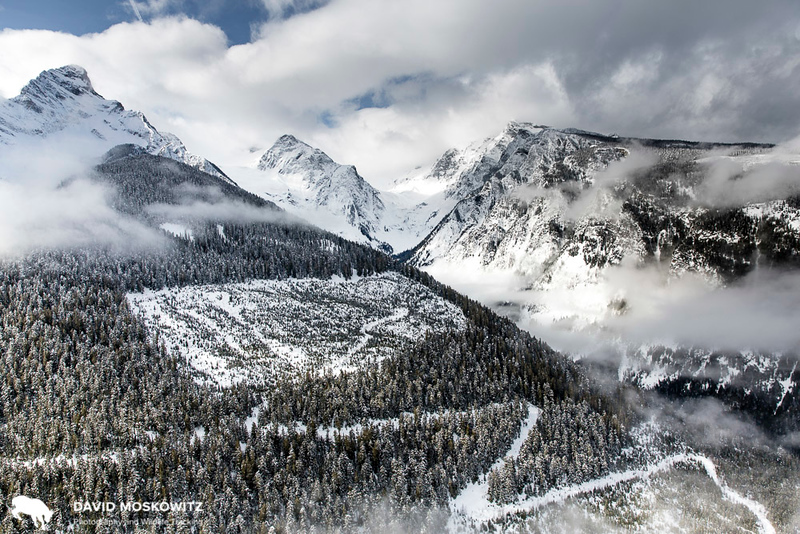
Recent clearcut of old growth inland temperate rainforest in the Monashee Mountains, BC. The vast majority of logging opperations in the rainforest are of previously uncut stands of trees.

Marcus Reynerson peers up at an old growht western red cedar with bands wrapped around it to keep the trunk from splitting when it is felled. This stand of ancient rainforest was clearcut a few days after I took this photo. Northern Selkirk Mountains, British Columbia.


David Walker skillfully drops rainforest trees in the Selkirk Mountains.

Western red cedar is used to provide a wide variety of valuable lumber products. Even so, many ongoing timber harvests in the rainforest are only economically feasible because of goverment subsidies from BC set up to encourage the liquidation of old growth forest stands.




Logging in the rainforest continues year round. A log loader stacks old growth cedar trees once they are bucked to length by the loggers in the foreground. Selkirk Mountains, British Columbia.

Buckerman Paul Sarafinchin smokes a cigarette while he trims logs. He has been a logger all his adult life and told me he came to the work and stays because the pay is much better then anything else he could do. Selkirk Mountains BC.

A skidder pulls an ancient cedar tree out of the forest in a wet snowstorm. Columbia Mountains, British Columbia.



The Celgar pulp mill along the Columbia River in Castlegar, British Columbia produces pulp for paper products from old growth hemlock logs cut in endangered mountain caribou habitat. According to the company's promotional materials, pulp is sold domestically and internationally to produced a wide variety of paper products including "hygiene products" (an industry euphomism reffereing to toilet paper and related products). The mill is FSC certified as sourcing only sustainable wood fibre for its operation and is owned by a USA corperation.

Timber cruiser Kate Devine works in the forestry industry close to Revelstoke, BC, in the summer evaluating the value of stands of trees before they are logged. “It’s easy for someone to sit in a 5000 square foot timber frame house and say you shouldn’t log anymore.” Devine, who spends her winter as a ski guide working with clients from around the world went on, “People have to realize where the stuff they want comes from. Maybe you don’t want it to come from your backyard, but it’s got to come from somebody’s backyard.”

Logging truck carrying old growth cedar trees out of endangerend mountain caribou habitat. Columbia Mountains, BC.

Mountan caribou depend on old growth forests for refuge from competing hoofed mammals and carnivores. Time in clearcuts like this one makes them more suseptible to predators. Loss of refuge habitat has been identified as the primary reason for their continued decline across their range.

A mountain caribou traverses an alpine slope in British Columbia's Hart Mountains. Behind the carbiou a high elevation clearcut stands in contrast to the remaining forest. Habitat destruction from logging, mining and resource extraction activities are the heart of continued decline of this globally unique ecotype of caribou.
1
2
3
4
5
6
7
8
9
10
11
12
13
14
15
16
17
18
Previous
Next


















